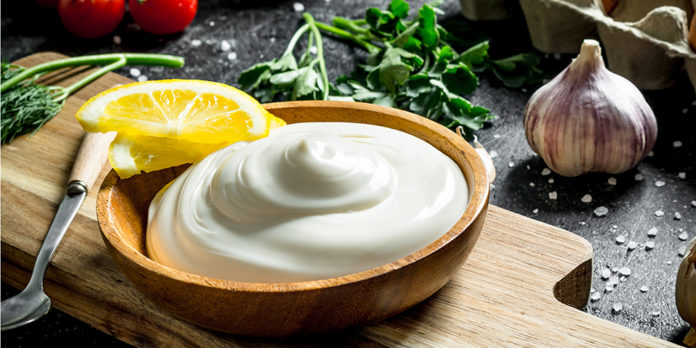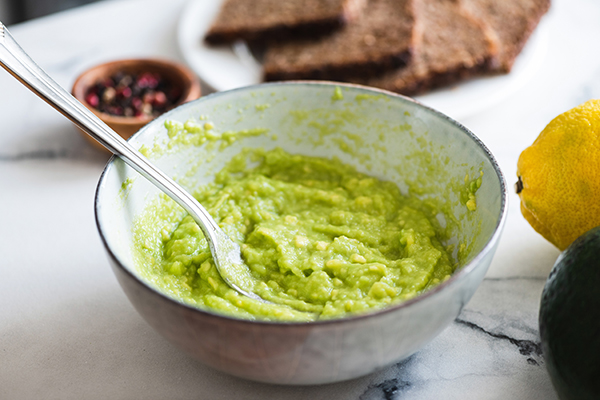The creamy texture and tangy flavor of mayonnaise is a staple in so many classic recipes — think potato salad, egg salad, pasta salad, sandwiches, burgers, and dips.
But it’s not exactly the pinnacle of healthy condiments, so you may be wondering if a worthy mayo substitute exists.
“Classic mayonnaise is made from emulsifying egg yolk with oil, mustard, a little lemon juice or vinegar, and salt,” says Fay Israsena, C.N.M. A.N.P., Beachbody Nutrition Specialist. “Store-bought versions often have various additives and preservatives added on to that list.”
Even if you try to make homemade mayo with healthier ingredients, Israsena adds, “The main ingredient is overwhelmingly oil, so 99 percent of the calories come from fat.”
That means mayonnaise is also calorie-dense.
Just one tablespoon of the creamy condiment packs 10 grams of fat and 94 calories — and we all know how hard it is to stick to one serving.
It’s fine to consume small amounts of mayo in a balanced diet, but “replacing mayo with a healthier, low-fat option saves us from putting our willpower to the test,” Israsena says.
Luckily, mayo substitutes can also be seriously flavorful, as these eight tasty alternatives prove.
1. Reduced-Fat Greek Yogurt
Reduced-fat Greek yogurt has the thickness needed to hold your ingredients together, without the fat content of oil-based mayo.
A cup of reduced-fat plain Greek yogurt contains 4.7 grams of fat — less than half the fat content in a single tablespoon of mayo.
Israsena suggests mixing Greek yogurt with a bit of mustard and lemon juice to add tang to a potato or pasta salad.
“It’s a good source of protein and probiotics as well, so that’s a bonus,” she adds.
2. Reduced-Fat Sour Cream
When you need a thicker mayo substitute than Greek yogurt, sour cream can do the trick.
A tablespoon of sour cream contains 2.9 grams of fat and just under 30 calories. Choose reduced-fat sour cream, and that number dips to 1.6 grams of fat and 20 calories per tablespoon.
Use sour cream in place of mayo in dips or cold salads, or as a spread on sandwiches and burgers — just be mindful of how much you’re using.
3. Avocado
While it’s not a condiment, sliced (or mashed) avocado lends creaminess, which makes it a surprisingly good mayo substitute for burgers, wraps, sandwiches, and even egg salad.
Avocados are a good source of healthy fats — especially monounsaturated fatty acids — along with fiber to help keep you feeling fuller for longer.
Just keep in mind a whole avocado contains 227 calories, so it’s wise to watch your portions!
You can also whip up some guacamole for a flavor-packed topper.
For a spicier, lower-calorie guac, substitute canned green chiles for some of the avocado.
4. Tofu-Based Mayo
Create a plant-based mayo substitute by blending a block of firm non-GMO tofu with mustard, lemon juice, or apple cider vinegar, salt, and a little olive or flaxseed oil, Israsena suggests.
Thanks to tofu’s unique texture, you don’t need to use as much oil as you normally would when making homemade mayo.
5. Oil and Vinegar
Oil and vinegar won’t work as a mayo substitute in every recipe, but it’s the perfect combo for creating a lighter alternative to mayo-based potato salad.
Store-bought dressings and condiments — including mayo — often use sunflower or safflower (canola) oil, explains Dana Ellis Hunnes, Ph.D., M.P.H., R.D., senior dietitian at UCLA Medical Center and author of the upcoming book Recipe For Survival.
But when you prepare your own vinaigrette, you can choose one of the healthiest cooking oils, like avocado oil or EVOO.
(Even the healthiest types of oil are still calorie-dense, however, so watch your portions.)
Vinegar adds tang and flavor to the mix with minimal calories.
Balsamic vinegar has 14 calories per tablespoon, and apple cider vinegar has just 3 calories per tablespoon.
6. Mustard
Replacing mayo is a two-part equation: flavor and texture.
Whether you opt for creamy dijon or whole-grain mustard, this condition has both categories covered.
Hunnes recommends using these lower-calorie condiments as a mayo substitute on sandwiches and burgers.
Dijon mustard can also stand in for mayo in a pasta salad or German-style potato salad.
7. Hummus
Vegetarians and vegans can attest to this being a seriously delicious sandwich topper.
Just like mayo, hummus brings creaminess to the equation.
Homemade hummus is your best bet, since you can control the type and amount of oil and tahini used.
(Store-bought versions may use canola oil — and a lot of it.)
A tablespoon of homemade hummus typically contains just 27 calories and 1.3 grams of fat.
8. Store-Bought Vegan Mayo
“Plant-based versions of almost everything exist now,” Hunnes says.
So if you want your mayo substitute to mimic the taste and texture of the real deal as closely as possible, a ready-made vegan mayo may be a good option.
The key here is to read the ingredient list closely.
“There are some pretty clean brands out there using interesting ingredients like avocado (for smoothness) and aquafaba (as a binder instead of eggs),” Israsena says.
Just steer clear of versions that contain preservatives and additives, she adds.
Pro tip: If you’re still craving true mayo flavor, blend one tablespoon of regular mayonnaise with half a cup of a mayo substitute. The mayo flavor will come through, while the healthier ingredient makes up most of the volume.





























